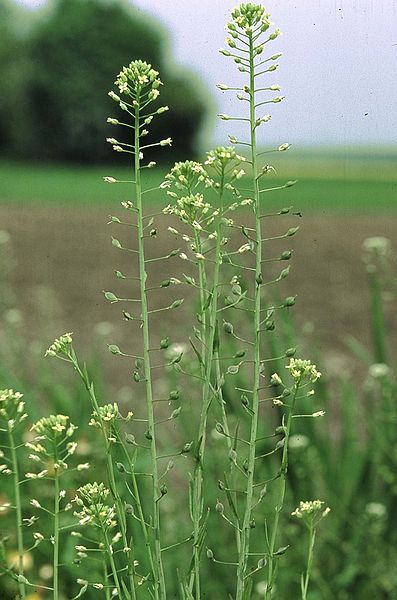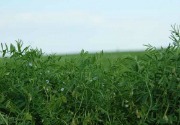| |
| |
 |
| |
 |
|
MMMM d, yyyy |
|
| |
The governments of Canada and Manitoba are investing more than $1.6 million in eight research projects dealing with a wide range of issues facing crop producers.
The projects include reducing the contamination caused by Fusarium head blight in wheat and identifying and cloning wheat genes responsible for higher yields and resistance to a variety of environmental stressors.
» Read more...
The changing of the seasons will bring the risk of flooding across part of the Canadian Prairies, especially as temperatures rise later in the season. Winnipeg and Regina are among the areas that could be at risk for spring flooding. A wetter-than-normal spring can exacerbate flooding issues in this region.
» Read more...
The Canadian Seed Trade Association (CSTA) has launched its Better Seed, Better Life program in an effort to engage with Canadians on the role of seed as the foundation for the foods and drinks we enjoy, the clothes we wear and the fuel in our cars. The program is based on materials created by the American Seed Trade Association and is a collaborative effort between the two groups.
» Read more...
|
| |
 |
 |
| |
|
| |
 Nu-Trax P+™ with CropStart™ technology provides the benefits of a starter in dry fertilizer applications. Coated on to every granule of a blend, Nu-Trax P+ delivers phosphorus, zinc and other essential nutrients to young plant roots. Click here to learn more about the benefits of Nu-Trax P+.
» Read more...
Nu-Trax P+™ with CropStart™ technology provides the benefits of a starter in dry fertilizer applications. Coated on to every granule of a blend, Nu-Trax P+ delivers phosphorus, zinc and other essential nutrients to young plant roots. Click here to learn more about the benefits of Nu-Trax P+.
» Read more... |
| |
 Corn acres continue to grow in Canada. How can the benefits of a starter fertilizer improve your yields? Compass Minerals agronomist John Holdsworth discusses this topic and how to add the benefits of a starter to dry fertilizer applications. Explore the benefits here.
» Read more...
Corn acres continue to grow in Canada. How can the benefits of a starter fertilizer improve your yields? Compass Minerals agronomist John Holdsworth discusses this topic and how to add the benefits of a starter to dry fertilizer applications. Explore the benefits here.
» Read more... |
| |
 |
 |
| |
|
| |
 Two field experiments were conducted in Saskatchewan and Alberta to determine the effect of nitrogen (N) fertilizer application on camelina plant establishment, seed and straw yield, total N uptake in seed and straw, seed oil and protein concentration, N fertilizer use efficiency and per cent recovery of applied N in seed.
» Read more
Two field experiments were conducted in Saskatchewan and Alberta to determine the effect of nitrogen (N) fertilizer application on camelina plant establishment, seed and straw yield, total N uptake in seed and straw, seed oil and protein concentration, N fertilizer use efficiency and per cent recovery of applied N in seed.
» Read more |
|
 While canola-wheat rotations have been prominent on the Prairies over the last few years, the question must be asked: at what cost? There is no doubt high canola prices have driven tight rotations, but a three-year rotation with pulse crops can be the most profitable and energy efficient approach.
» Read more
While canola-wheat rotations have been prominent on the Prairies over the last few years, the question must be asked: at what cost? There is no doubt high canola prices have driven tight rotations, but a three-year rotation with pulse crops can be the most profitable and energy efficient approach.
» Read more |
| |
|
| |
|
|
| |
| |








